By Mark McGee
Henry Davis thought he had the idea for an event in the spring of 1939, but his passion, started by something as simple as a clover plant, became a phenomenon growing from a three-day horse show to become the largest horse show in the world celebrating its 83rd year of existence.
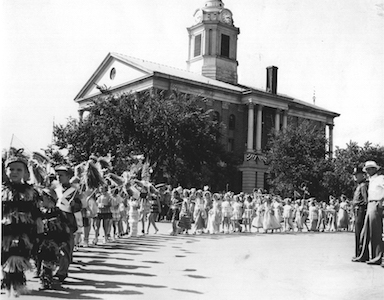
It was 1939. People were talking about “The Wizard of Oz” which hit theaters in August. Many movie fans were also awaiting the premiere off the epic “Gone with the Wind” planned for a December release. Adolph Hitler’s German army invaded Poland on September 1st signaling the start of World War II, a conflict the United States would not be involved in for two more years.
Boyd’s was offering used cars perfect for the drive from Shelbyville to New York City for the 1939 World’s Fair. It was called “The World of Tomorrow” as the country appeared to be emerging finally from “The Great Depression” of 1929. Ads in the “Shelbyville Gazette” touted train trips to the Big Apple from Nashville for the fair. The first broadcast of the “Dinah Shore Show” on radio in August was a major showcase for the Winchester, Tennessee native. (Editor’s note: the local paper would not be called the “Shelbyville Times-Gazette” until 1948.)
Closer to home, Davis, a breeder, owner, trainer and promoter of the Tennessee Walking Horse breed attended the Crimson Clover Festival in Winchester. His simple plan was to purchase hay. On the way he might have sipped on a 5-cent Coca-Cola bottled in Shelbyville. He could have packed a lunch for his trip from the long list of sandwich meats and cheeses available from Wallace’s Store on the northeast side of the square.
Davis, known as the “Father of the Tennessee Walking Horse National Celebration”, explained in the 1953 “Blue Ribbon” magazine the thought of a festival similar to the Crimson Clover Festival “got under his skin”. He added, “the more I thought about it, the more enthusiastic I became over the idea.”
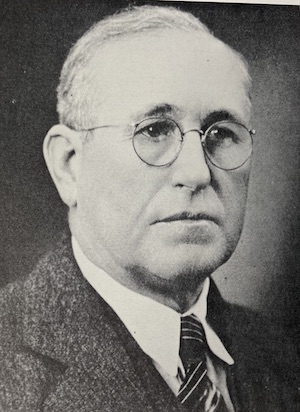
It is difficult to contain enthusiasm. The day after his return from Winchester Davis, a walking horse owner, trainer, breeder and judge, made a visit to Peoples National Bank. In the article, written by Davis, he says he mentioned the idea of a Shelbyville festival featuring the Tennessee Walking Horse to William Parker, a local banker, who invited Davis to make a presentation for the Lions Club.
“I accepted the invitation and took with me R.T. Murchison, Charles Pearson, Floyd Carothers and Fred Walker. We outlined to that club what a Walking Horse Festival might be and what we thought it would mean to the Tennessee Walking Horse breed,” Davis wrote. “That night Dr. W.H. Avery, a member of the Lions Club, made the motion that the club appoint a committee of three to meet with the various other clubs in town to ask each of them to appoint a committee of three and those committees to meet in body with the men whose names I mentioned and myself.”
Davis added the Shelbyville Rotary Club also formed a three-man committee in support of the Walking Horse Festival.
Dr. Bob Womack lists Davis, Murchison, Carothers, W.C. Tune, Charles T. Carney, Zach T. Carney, Clarence Haynes, W.J. McGill, Charles T. Hulan, W. F. Fly and M.C. Adams, Jr. as the 11 local men who were granted the Charter for Incorporation or the Tennessee Walking Horse National Celebration. For reasons not explained, Albert M. Dement, who first began the movement for the registration of Tennessee Walking Horses, according to the 1940 “Blue Ribbon” magazine, is not mentioned as an early organizer of the show. His work in developing the breed was the main reason Wartrace, Tennessee, earned the title “Cradle of the Tennessee Walking Horse”. Ironically the 1939 show would be the only one Dement would see or participate in as he died in March of 1940.
Tune, Franklin Boyd, P.J. Scudder and William Parker were given the duties of administration of The Celebration which would be held for the first time September 7, 8 and 9, at the old Central High School practice field. As with most new ventures, money was the prime concern. According to an article in the August 24, 2003 edition of The Walking Horse Report”, 200 hundred Bedford Countians pledged $10 each to underwrite the $2,000 needed for work on the festival. The $12,000 show did not require a contribution from anyone.
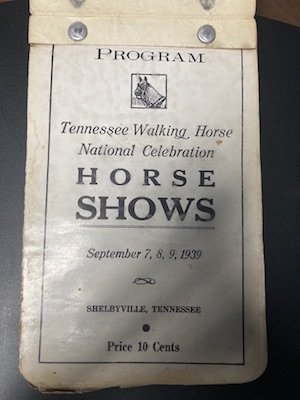
Much of the success of the first show goes to the leadership of the event. A page in the 1939 “Blue Ribbon “features the photos of the first Celebration board. William Baxter of Cookeville, Tennessee, the only non-Bedford County member, was named director-general. William Parker was the banker and chairman; Clyde Tune was named vice president and Phil Scudder was secretary-treasurer. These four were the original Executive Committee.
The remaining officers were T. Franklin Boyd as finance chairman, Joe Shapard and directors W.H. Davis, Miss Ruth Reagar, E.L. Adamson, C.H. Eblen, D.L. Townes, Mrs. J.J. Campbell, C.L. Shoffner, Mrs. W.P. Cooper, Mrs. David Shapard and Mayor G.H. Hulan.
From early August the “Shelbyville Gazette” was filled with articles and advertising centered around The Celebration. Anticipation throughout the community was at a high level.
Local news stories touted all of the events surrounding the show as well as providing stories on the history of the breed, including profiles of the early major sires. H.J. Thompson’s Men’s Clothing Store offered a variety of felt hats ranging from $1.98 to $5. The Depot Street Cash Grocery had everything one might need for a special dinner during The Celebration. Women’s dresses were available at several locations around the square.
In the horse world in Middle Tennessee the time had come for a major breed show, something bigger than the one-night events offered at venues like county fairs. As Dr. Bob Womack points out in “The Echo of Hoofbeats: The History of the Tennessee Walking Horse” the Tennessee State Fair and a show in Baton Rouge, Louisiana, were considered showcases, but there was no true major show for Tennessee Walking Horses.
The first Celebration was more than a horse show. It was also a celebration of the community. An estimated 20,000 spectators lined the streets for what was called the Mammoth parade and “applauded riders on Bedford’s best horses, led by J.R. Brantley of Manchester and Celebration director W.B. Boyd, and beautiful floats”, according to a “Shelbyville Gazette” article written a week after the Celebration. Tennessee Governor Prentice Cooper, a Shelbyville resident, led the Friday parade around a jammed square. First National Bank won for best float with Empire Pencil Company finishing second.
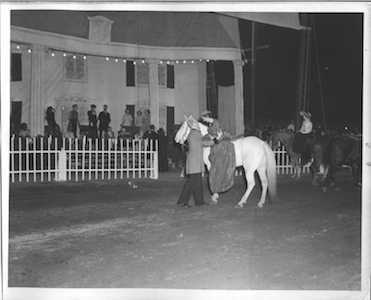
Thursday afternoon a “Junior” parade attracted hundreds of spectators. There also was a large crowd in attendance at a pageant billed as “The Clatter of Hoofbeats” with riders performing “intricate figures” with the major feature of 48 female riders displaying a 39-by-65-foot “Old Glory”, according to the front-page article.
Both a buffet breakfast and dinner were held at the Shelbyville Country Club prior to the start of the show Friday night. After the last horse had been judged the new Shelbyville High School gymnasium was the site of a dance called the “Queen’s Ball”. The dance attracted most of Shelbyville’s society element and many out-of-town visitors the “Shelbyville Gazette” reported.
The Celebration was such a big event it required two queens – identical twins Mary and Margaret Wallheiser. They presided over the “Queen’s Ball,” where they were escorted by Governor Cooper. They would also drape the first ever World Grand Champion floral horseshoe over Strolling Jim.
A barbecue dinner was the social highlight of Saturday events. No matter the time of the day there was something to keep visitors and locals busy.
It might not have been the caliber of the World’s Fair in terms of attracting spectators, but the “Shelbyville Gazette” reported 22 states were represented at the Manufacturers’ Exhibit as part of the show – Tennessee, Alabama, Georgia, Texas, Virginia, North Carolina, New Mexico, Indiana, Iowa, Michigan, Pennsylvania, Mississippi, Kentucky, Missouri, Illinois, Florida, Ohio, Arkansas, Oklahoma, South Carolina, Louisiana and West Virginia.
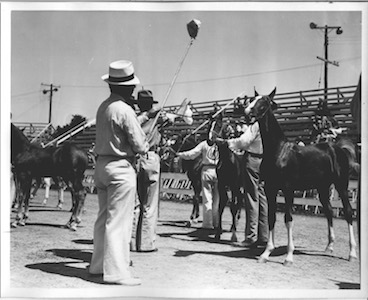
The article also mentioned an exhibit of antiques featuring heirlooms from Bedford County’s most prominent families was equally as popular as the Manufacturers’ Show.
The first Celebration blue ribbon was given Thursday morning at the colt show with Jim Farrar’s Belle Of Bedford earning Walking Colt champion honors.
Womack writes 257 horses were entered in the three-day show with 10 from Mississippi, six from Georgia, two from Alabama and the remainder from counties in the immediate vicinity of Shelbyville. Everyone was waiting for the World Grand Championship class, the last of 27 classes offered.
Strolling Jim, a three-year-old chestnut gelding, was purchased for $350 by Davis and Floyd Carothers four months before the show. Davis discovered Strolling Jim at work on a farm in Viola, Tennessee. Colonel C.H. Bacon of Loudon, Tennessee, bought Strolling Jim in early summer. Carothers remained as trainer and rode the talented gelding to 12 consecutive sweepstakes wins and was set to battle Lilly White, the winner of the Baton Rouge Show, for The Celebration title.
Nine horses were in competition according to “The Echo of Hoofbeats” – Silver Moon, Lilly White, Black Pepper, You’ll Remember, Booger Boo, June Rose, Strolling Jim, Passing Parade and Glorious Night. Carothers and Strolling Jim were flawless as a team and easily rose above the rest of the class. Lilly White was reserve.
As Womack points out the prize money for the show was impressive for the time with the World Grand Champion winning $250 and the reserve champion earning $125. Only the top five entries were awarded prize money.
According to at least two sources more than 40,000 tickets were sold with spectators crowding the Tate Athletic Field behind the old high school.
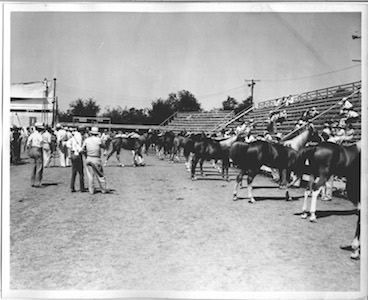
W.L. Parker, general chairman of the show, may have presented the best reason for The Celebration in his article “Purposes of Celebration” in the 1939 “Blue Ribbon” magazine.
“The purpose is to make it possible for the Tennessee Walking Horse to bask in the limelight before the thousands of visitors who will come from many parts of the nation in order that they may become better acquainted with ‘the gentleman of the equines’ which is the product of this small area in Middle Tennessee. “The Celebration is an All-Middle-Tennessee show which brings together the finest and best horses in the walking horse breed, and those selected as winners in their respective classes here have earned the highest and most coveted laurels in the plantation walking horse world – and the grand champion stands supreme in the breed.”
Some aspects of The Celebration have changed in 83 years. For example, plantation walking horses are one division of the breed, and the show attracts horses from around the United States and the world.
But, the grand champions of the various divisions, capped by the World Grand Champion, still “stand supreme” at what the late “Shelbyville Time-Gazette” editor Ben Green labeled “a community miracle.”